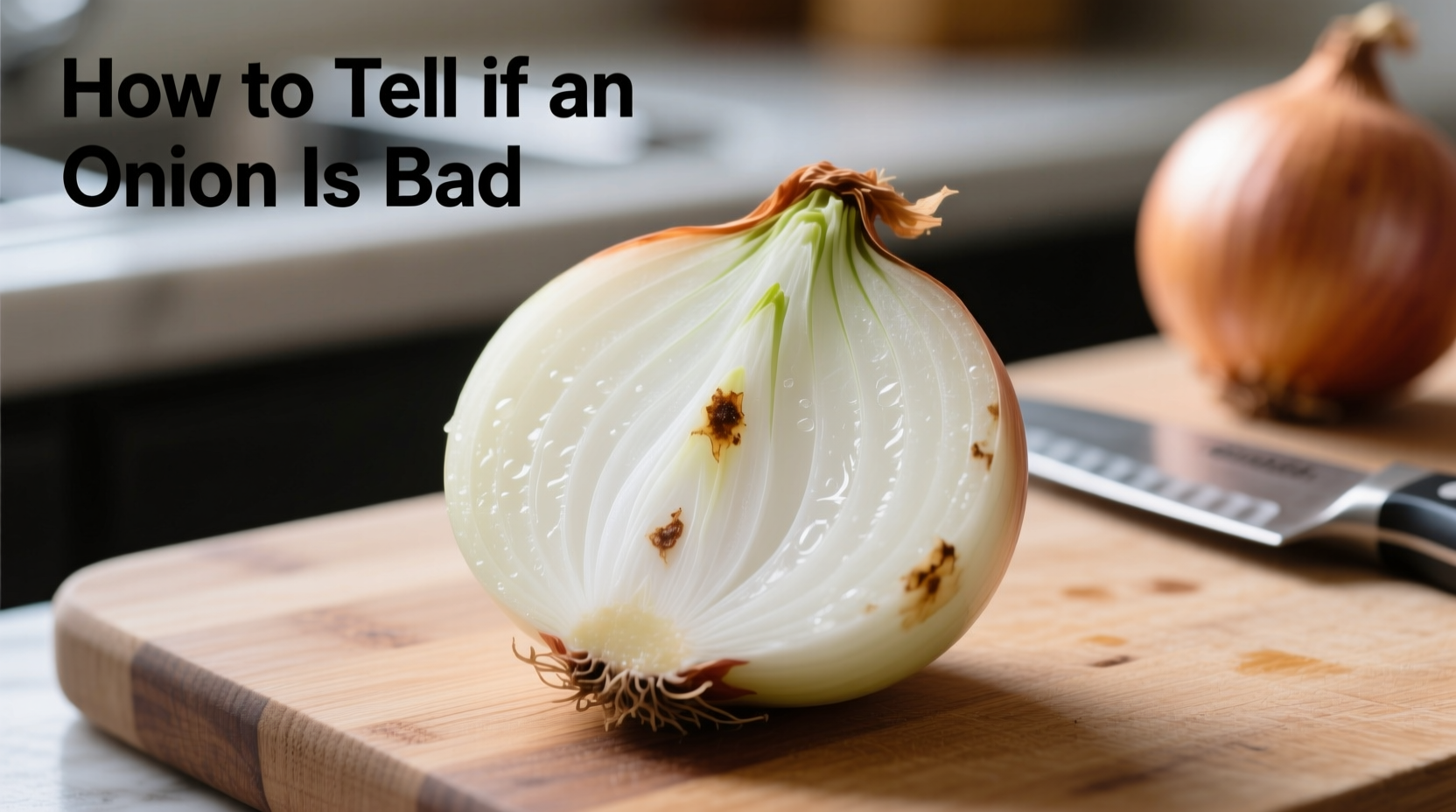If your onion has soft spots, mold growth, a slimy texture, or emits a sour or unpleasant odor, it's bad and should be discarded immediately. Fresh onions should feel firm, have dry outer skins, and show no signs of decay.
Nothing ruins a perfectly good recipe like discovering your onion has gone bad at the last minute. Knowing exactly how to tell if an onion is bad saves you from food waste, potential foodborne illness, and ruined meals. In this guide, you'll learn the precise visual, tactile, and olfactory indicators that signal onion spoilage—plus practical storage tips to extend freshness. Whether you're a home cook or meal prepping enthusiast, these actionable steps help you confidently assess onion quality every time.
Visual Inspection: What to Look for on the Surface
Start your assessment with a thorough visual examination. Good onions maintain their characteristic papery outer skin without significant discoloration. When checking how to know if an onion is spoiled, watch for these critical visual red flags:
- Mold growth - Fuzzy white, green, or black spots indicate advanced spoilage
- Dark patches - Brown or black areas that weren't present when purchased
- Excess moisture - Wet spots or translucent areas on the skin
- Root sprouting - Green shoots emerging from the top (while not dangerous, this indicates aging)
The USDA Food Safety and Inspection Service confirms that visible mold on produce typically means the food should be discarded, as mold can produce harmful mycotoxins that may have spread beyond visible areas (USDA FSIS).
| Good Onion Characteristics | Bad Onion Warning Signs |
|---|---|
| Dry, papery outer skin | Mold growth (white, green, or black) |
| Firm texture throughout | Soft, mushy spots |
| Distinct onion smell when cut | Sour or unpleasant odor |
| No visible moisture | Slime or wet patches |
Tactile Assessment: Feeling for Quality
Your fingers provide crucial information when determining how to tell if an onion has gone bad. Properly stored onions should feel solid and heavy for their size. Perform this simple test:
- Gently squeeze the onion without applying excessive pressure
- Check for any soft or yielding areas
- Examine the base (root end) for mushiness
- Feel for any slimy film on the surface
According to research from the University of California Agriculture and Natural Resources, onions begin to deteriorate when their moisture content changes significantly. A slimy texture indicates bacterial growth and enzymatic breakdown that makes the onion unsafe to eat (UC ANR).

Smell Test: The Definitive Indicator
While visual and tactile checks provide valuable clues, the smell test delivers the most definitive answer for how to know if an onion is spoiled. Fresh onions have a characteristic sharp, slightly sweet aroma. When onions spoil, they develop distinct off-odors:
- Sour smell - Indicates bacterial fermentation
- Vinegar-like odor - Sign of advanced spoilage
- Musty or moldy scent - Even without visible mold
- Complete absence of odor - When an onion should smell strong
If you detect any unusual odors, discard the onion immediately. The Food and Drug Administration emphasizes that smell is a reliable indicator of food safety for many perishable items, including produce (FDA Food Code).
When in Doubt: Safety First Approach
Understanding how to tell if an onion is bad beyond doubt requires knowing when partial spoilage might be salvageable versus when the entire onion must be discarded:
- Minor sprouting - Cut off green shoots; remainder is safe if firm
- Single soft spot - Cut away at least 1-inch around affected area
- Widespread softness - Discard entire onion (bacteria have likely spread)
- Visible mold - Discard entire onion (mycotoxins may be present internally)
The National Center for Home Food Preservation notes that while some surface imperfections can be trimmed, onions with significant spoilage should never be consumed due to potential bacterial contamination that isn't always visible (NCHFP).
Preventing Onion Spoilage: Storage Best Practices
Learning how to know if an onion has gone bad is important, but preventing spoilage is even better. Follow these evidence-based storage methods:
- Store whole onions in a cool, dark, well-ventilated place (55-60°F / 13-16°C)
- Never refrigerate whole onions (increases moisture and accelerates spoilage)
- Keep away from potatoes (they emit gases that speed ripening)
- Use mesh bags or baskets instead of plastic bags for better air circulation
- Cut onions should be stored in airtight containers in the refrigerator for 7-10 days
Properly stored yellow onions typically last 2-3 months, while red and white varieties last 1-2 months. Sweet onions have the shortest shelf life at 3-4 weeks. These timelines come from extensive testing by the Produce Marketing Association's quality assurance department.
Special Considerations for Different Onion Types
While the basic principles of how to tell if an onion is spoiled apply to all varieties, certain types have unique characteristics:
- Shallots - More prone to mold; check frequently for soft spots
- Pearl onions - Small size means spoilage spreads quickly; use promptly
- Green onions/scallions - Wilting is normal; discard when slimy or smelly
- Spring onions - Roots should remain crisp; discard if slimy
Remember that cooking does not eliminate all bacteria or toxins produced during spoilage. When in doubt about how to know if an onion is bad for cooking, err on the side of caution and discard questionable onions.











 浙公网安备
33010002000092号
浙公网安备
33010002000092号 浙B2-20120091-4
浙B2-20120091-4